Family : Syngnathidae

Text © Giuseppe Mazza

English translation by Mario Beltramini
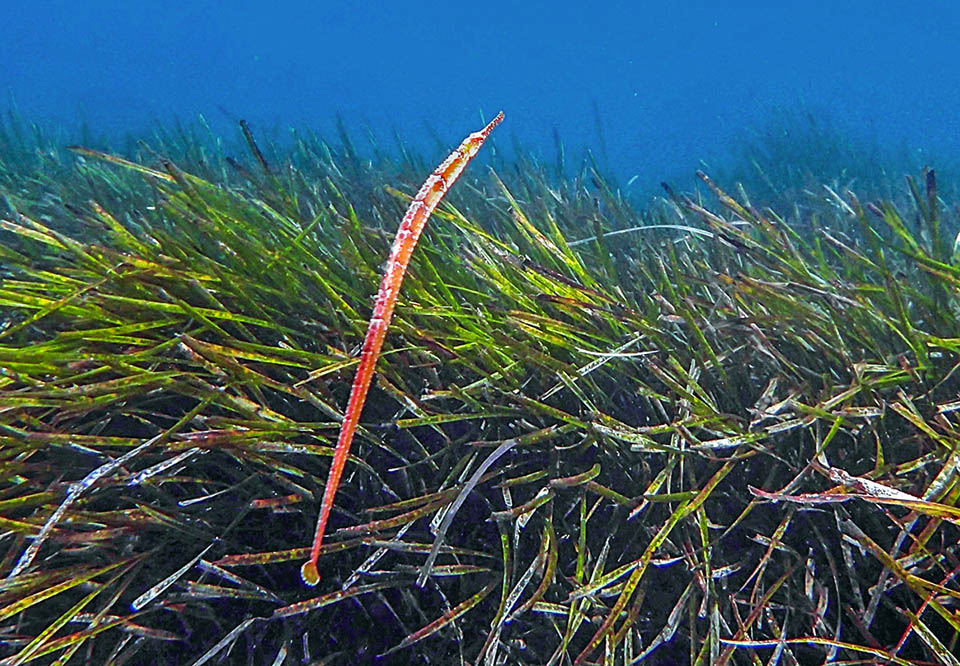
Usually 33-35 cm long, but also half a metre, Syngnathus acus loves the submerged prairies that offer easy hideouts © eduardmarques
The Greater pipefish, Syngnathus acus Linnaeus 1758, belongs to the class of the Actinopterygii, the ray finned fish, and to the Syngnathiformes, an order gathering 5 families of fish with elongated snout shaped like a pipe, excluding the adults of the genus Bulbonaricus who lose it, like Bulbonaricus brauni, during the passage from the pelagic larval stage to the adult one.
It’s the Aulostomidae, the family of the trumpetfish, like Aulostomus chinensis, of the Centriscidae, the razorfish like Aeoliscus strigatus, of the Solenostomidae, or Ornate ghost pipefish, like Solenostomus paradoxus, of the Fistulariidae, the Smooth flutemouth like Fistularia commersonii, and of the Syngnathidae, that of the Common seahorses like Hippocampus kuda and of the needlefish that, if looked well, would be thought to be unrolled seahorses.
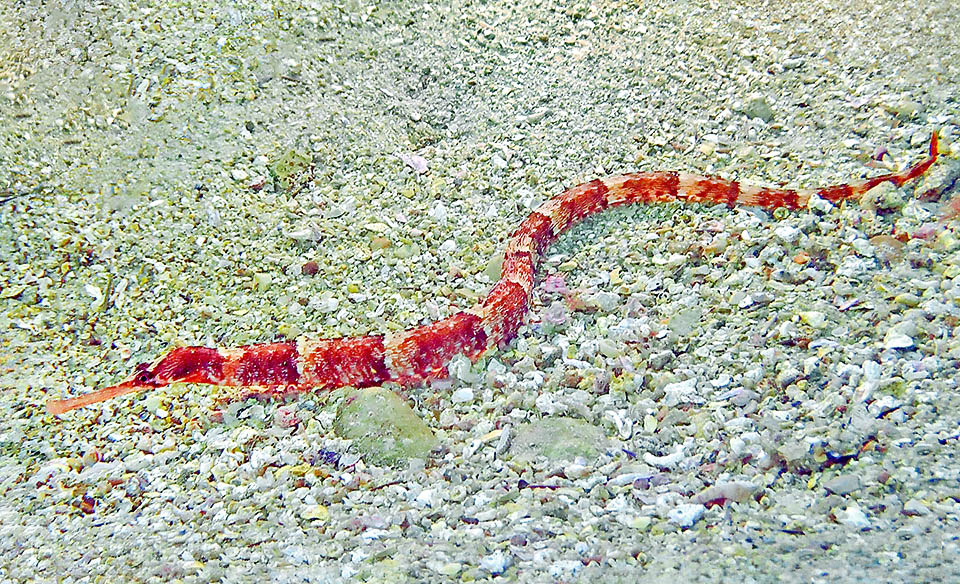
Frequent in Mediterranean and in Black Sea, is found also in East Atlantic, from Norway to the Cape of Good Hope. Then, in Indian Ocean, its presence is uncertain © Ana Santos
The genus Syngnathus, created by Linnaeus, originates from the Geek “syn”, together, and “gnathos”, jaw, with reference to the jaws fused together to form a long cylinder. The specific term acus, needle in Latin, always refers to this tool, thin compared to the body, that renders pointed the profile of the fish.
Zoogeography
Syngnathus acus is frequent all over the Mediterranean and the Black Sea, but is found also in the eastern Atlantic, from Norway and the British islands up to South Africa. After the Cape of Good Hope, in the Indian Ocean,
its presence is uncertain, and even more in the Pacific.

Colour variations. The long cylindrical snout sucks like a pipette planktonic crustaceans, mostly copepods and mysids, but also small worms, larvae and young fry. From left © javi-calvo – © Pierre Corbrion – © Pierre Corbrion – © whodden
Ecology-Habitat
The Greater pipefish, present also in brackish waters, lives demersal and is not migratory along the coasts.
It is found in zones rich in weeds and especially in the prairies of marine phanerogams, where it easily disappears from the sight of the predators hiding among the leaves of similar appearance. It may dive down up to 110 m of depth, but is mainly found between the 3 and 15 m of depth and temperatures between 10,3 and 22,6 °C.
Morphophysiology
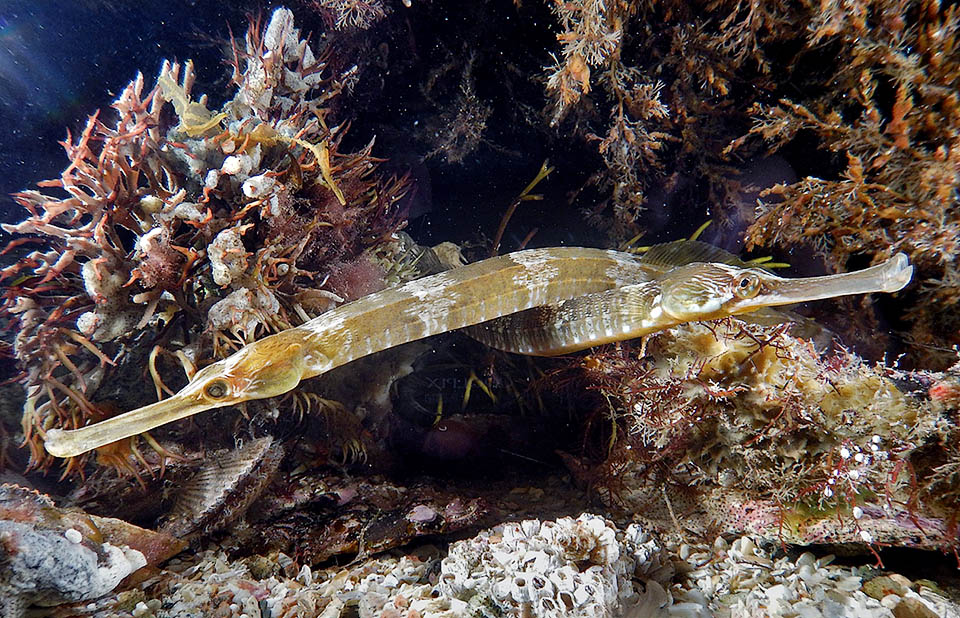
Couple. After courting, eggs are laid for fecundation in the brood pouch of the male © Chris Isaacs
Syngnathus acus may be almost half a metre long, even if its normal size is of 33-35 cm.
The body, anguilliform with an almost square section, is protected by big angular plates that replace the scales. The head, characterized at the top by an elongated protuberance similar to the so-called “coronet” of the seahorses, ends with the long tubular snout tapers and circular snout that widens at the end with an oblique mouth turned upwards.
Between the head and the beginning of the dorsal fin with 15-60 soft rays, we count 18-19 bony rings that stiffen instantly, like a plate, when the fish is seized. Then the body gets thinner with an evident sexual dimorphism in the males that have, under the dorsal fin, a showy brood pouch for the eggs.
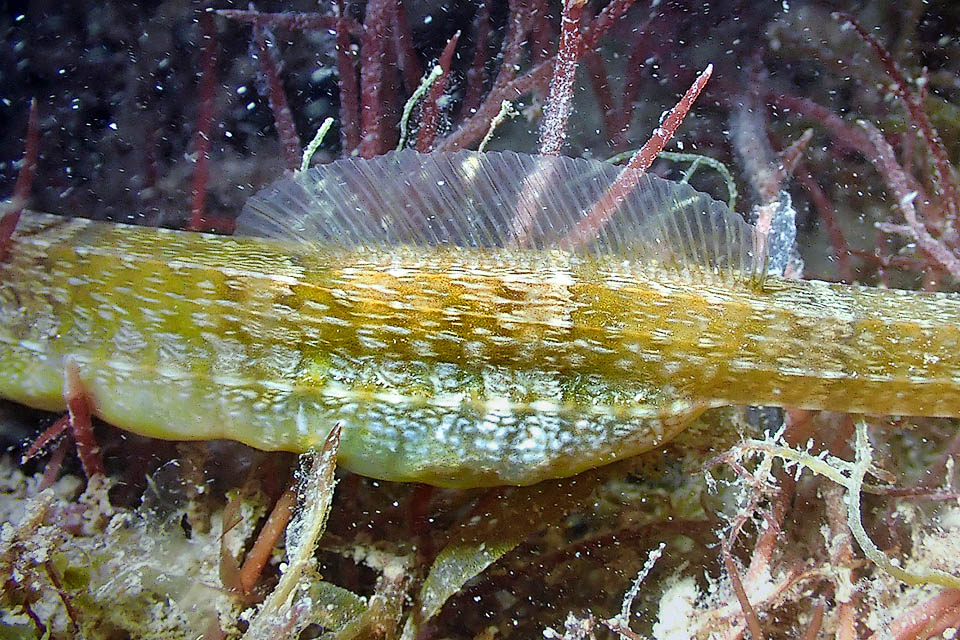
Here it is. It may keep even 400 of them, deposited in time by more females. Babies are not expelled by father but get out alone when 1,7-3,5 cm long © Pierre Corbrion
There are no pectoral fins and the anal, whilst the caudal elongates roundish like an oar.
The livery is an alternation of vertical dark bands, brownish or reddish, and clear, of cream white or pale green colour, adorned with fine punctuation and camouflage lines.
Ethology-Reproductive Biology
Syngnathus acus nourishes by sucking with its long cylindrical snout, like a pipette, planktonic crustaceans, mainly copepods and mysids, but also small worms, larvae and young fry.
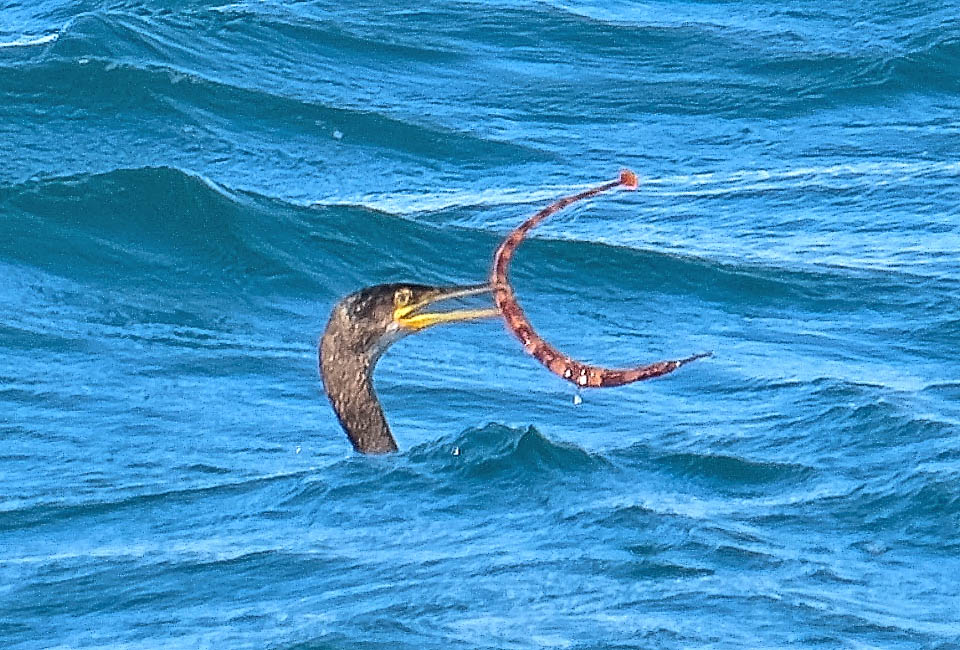
Syngnathus acus seized by a cormorant. In these cases its only defense is to stiffen the body, armoured by 18-19 bony rings © Rod Talboys
Sexual maturity occurs when around 30 cm long and the reproduction happens three times a year, depending on the zone, between May and August.
After courting, the eggs are laid for the fecundation into the brood pouch of the male that may contain even 400 of them, often added several times by other females.
Gestation lasts about 5 weeks and upon the birth the babies measure 1,7-3,5 cm. They are not expelled by the father’s contractions, like in the seahorses, but get out alone when they feel ready to grow benthic, hiding on the seabeds.
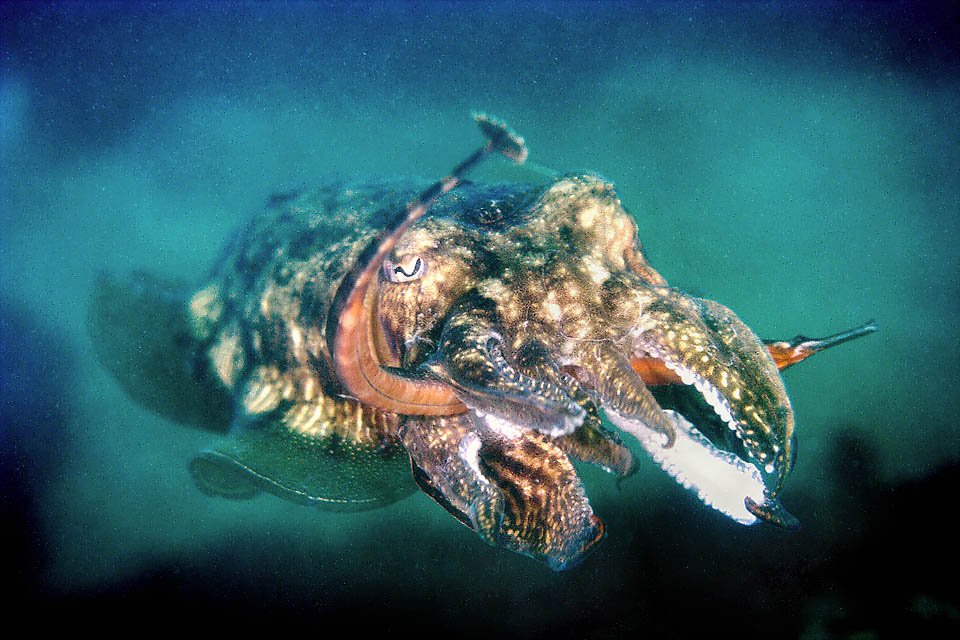
Here desperately tries to free itself from a cuttlefish wrapping it, now without hope, among its tentacles © João Pedro Silva
Resilience, mediocre, has a minimum doubling time of the populations of 1,4-4,4 years, and the fishing vulnerability, moderate, marks 40 on a scale of 100. Since May 7 2013 Syngnathus acus however appears as “LC, Least Concern”, in the IUCN Red LIst of the endangered species.
Synonyms
Sygnathus acus (Linnaeus, 1758); Typhle heptagonus Rafinesque, 1810; Syngnathus rubescens Risso, 1810; Syngnathus brachyrhynchus Kaup, 1856; Syngnathus delalandi Kaup, 1856; Dermatostethus punctipinnis Gill, 1862; Syngnathus alternans Günther, 1870.
→ For general information about FISH please click here.
→ For general information about BONY FISH please click here
→ For general information about CARTILAGINOUS FISH please click here.
→ To appreciate the BIODIVERSITY of BONY FISH please click here.
→ To appreciate the BIODIVERSITY of CARTILAGINOUS FISH please click here.
